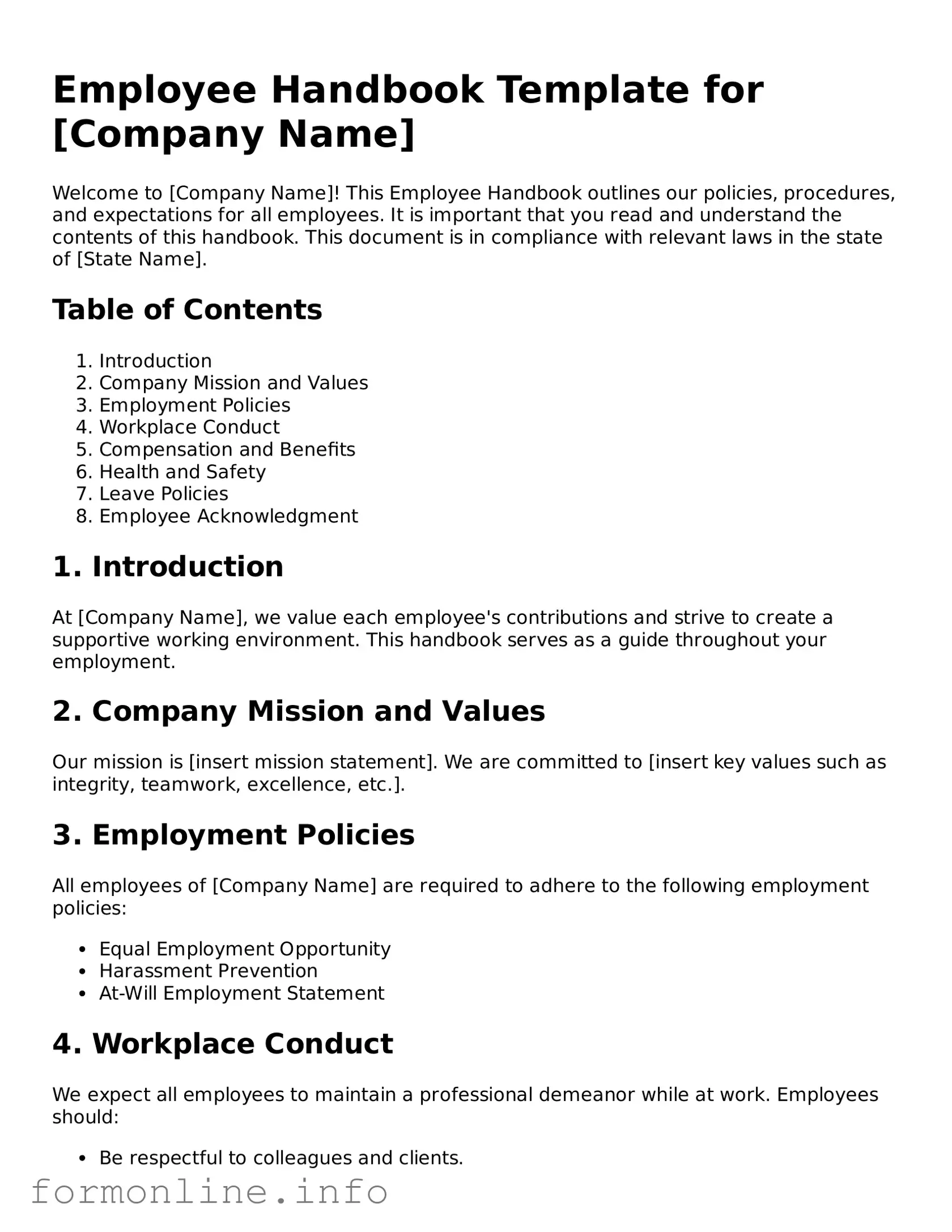Employee Handbook Template for [Company Name]
Welcome to [Company Name]! This Employee Handbook outlines our policies, procedures, and expectations for all employees. It is important that you read and understand the contents of this handbook. This document is in compliance with relevant laws in the state of [State Name].
Table of Contents
- Introduction
- Company Mission and Values
- Employment Policies
- Workplace Conduct
- Compensation and Benefits
- Health and Safety
- Leave Policies
- Employee Acknowledgment
1. Introduction
At [Company Name], we value each employee's contributions and strive to create a supportive working environment. This handbook serves as a guide throughout your employment.
2. Company Mission and Values
Our mission is [insert mission statement]. We are committed to [insert key values such as integrity, teamwork, excellence, etc.].
3. Employment Policies
All employees of [Company Name] are required to adhere to the following employment policies:
- Equal Employment Opportunity
- Harassment Prevention
- At-Will Employment Statement
4. Workplace Conduct
We expect all employees to maintain a professional demeanor while at work. Employees should:
- Be respectful to colleagues and clients.
- Communicate effectively and openly.
- Adhere to work schedule and attendance policies.
5. Compensation and Benefits
Employees will receive compensation in accordance with their role and market standards. Additional benefits include:
- Health Insurance
- Retirement Plan
- Paid Time Off
6. Health and Safety
Safety is a priority at [Company Name]. Employees must adhere to all safety guidelines and report any concerns to their supervisor immediately.
7. Leave Policies
Employees are entitled to various forms of leave, which include:
- Sick Leave
- Family Leave
- Vacation Leave
8. Employee Acknowledgment
Please sign and date below to confirm that you have received, read, and understood the Employee Handbook.
Employee Name: _________________________
Date: _________________________
